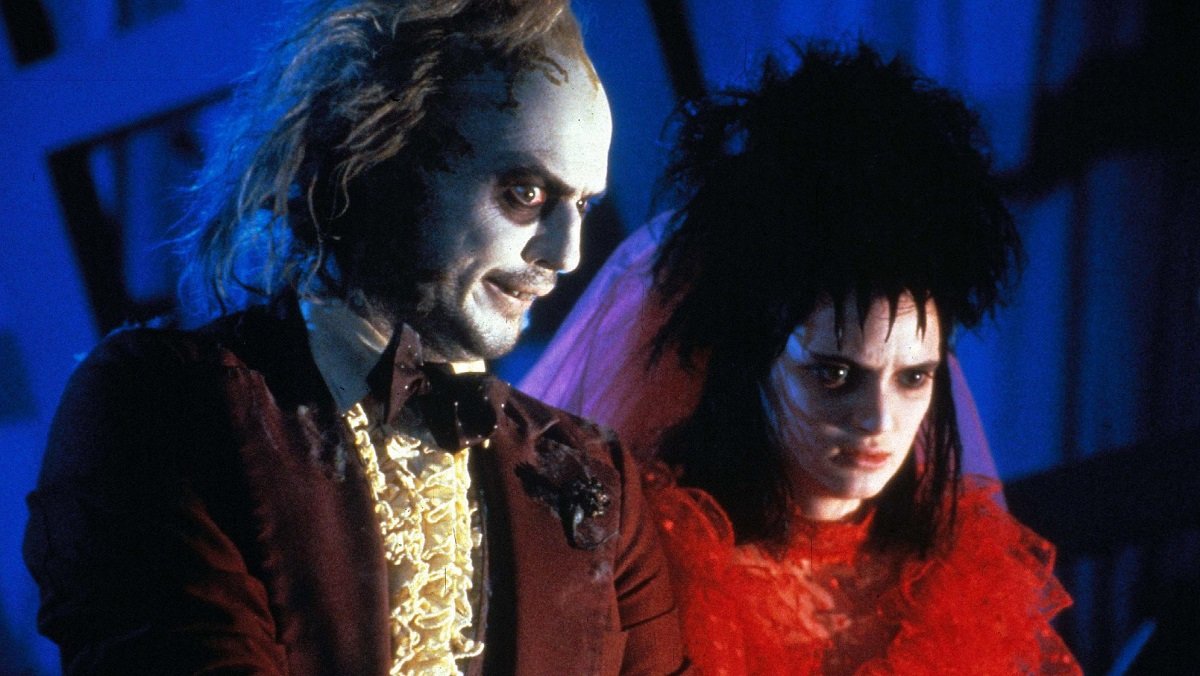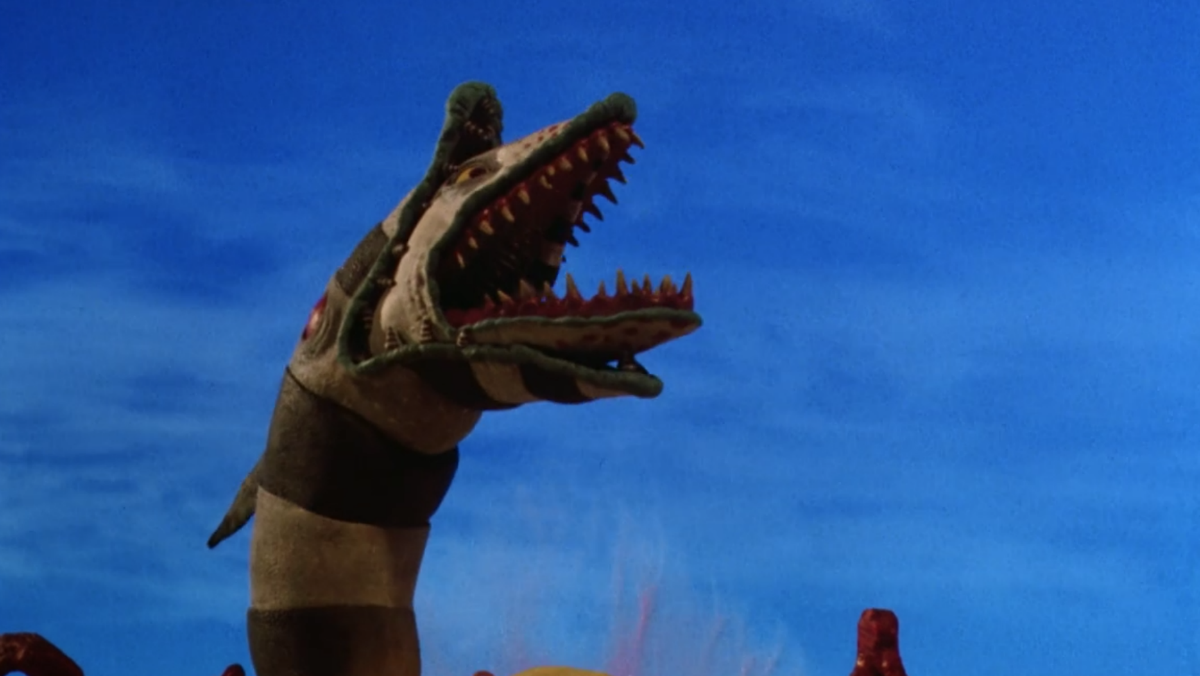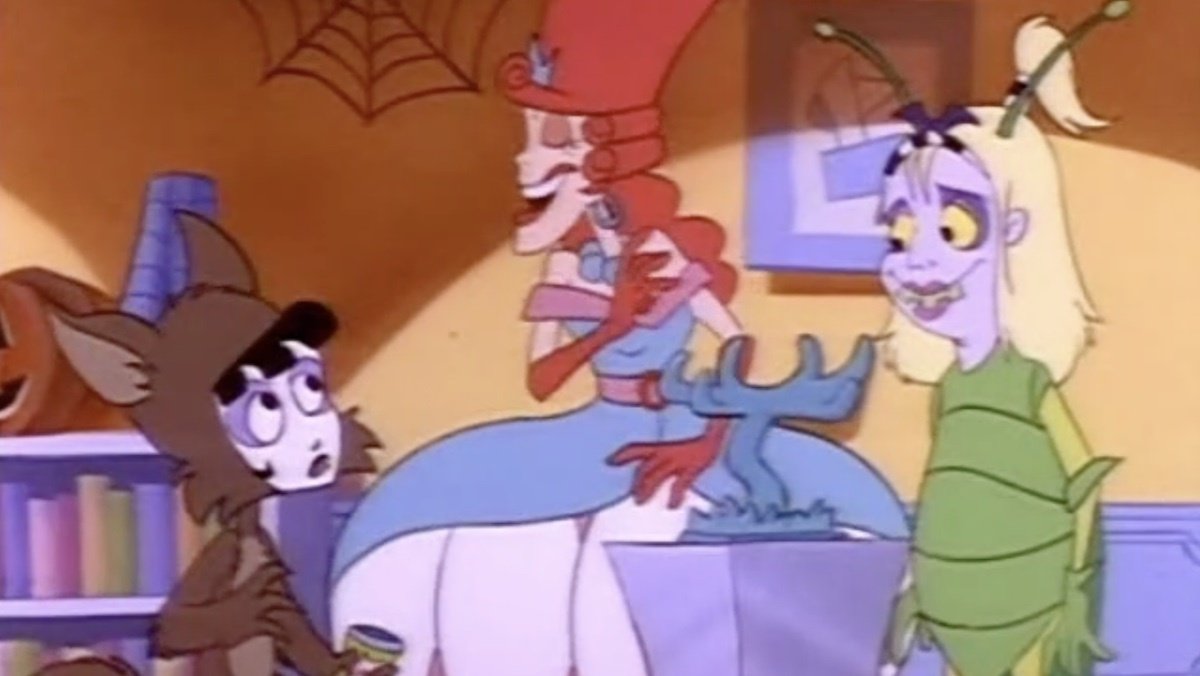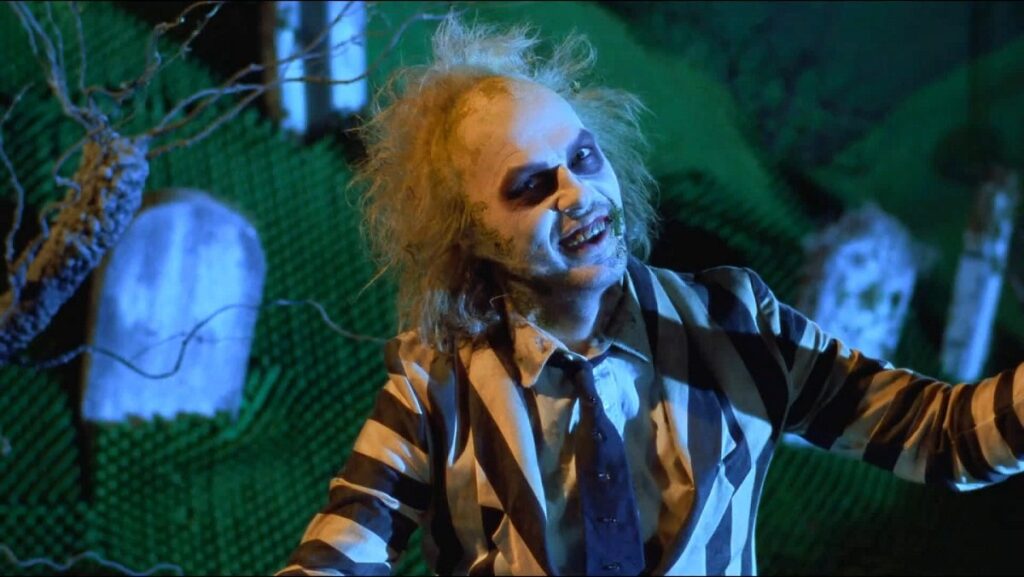Beetlejuice was the unlikeliest of hits upon release in the spring of 1988. Since then, the film has left an incredible pop culture footprint. The Michael Keaton-starring supernatural comedy introduced the Tim Burton aesthetic to the masses. It particularly resonated with a certain type of spooky goth kid who had a sense of humor about themselves. Decades later, Beetlejuice‘s popularity continues to endure, spawning a sequel, Beetlejuice Beetlejuice, which will hit theaters in September 2024. In honor of Beetlejuice‘s enduring legacy, lets get into unlikely story of how Tim Burton’s sophomore film became a big hit and a cultural icon.
The Original Beetlejuice Script’s Inspiration: Annoying Neighbors and Ghostbusters
In the early ’80s, horror novelist Michael McDowell saw the success of movies like Poltergeist and Ghostbusters. Both of these films brought supernatural themes to mainstream audiences with a lighter touch and became huge successes. This inspired McDowell to try his hand at writing a story in the spooky realm with a similar approach. At this time, according to The Ringer, McDowell and his partner were living in Medford, Massachusetts when the yuppie explosion began. Annoyed at the pretentious new neighbors in their quaint town, McDowell came up with the idea of nice ghosts who need to get rid of awful modern living folks in their home. The “nice ghosts” call upon the services of a mischievous “bio-exorcist” who goes by the name Betelgeuse. Pronounced, obviously, as “Beetlejuice.”

McDowell’s script, which had revisions by writers Larry Wilson and Warren Skaaren, eventually landed at David Geffen’s production company before finding its final home at Warner Bros. Studios. Studio execs loved the script yet many were afraid it was too weird for a mainstream audience. The creative team even considered changing the name to House Ghosts. At one point, it had a much darker ending where teenage lead Lydia dies in a fire then haunts the home. At the studios’ behest, these darker and more sinister aspects were taken out. (In retrospect, this was probably a good idea.)
Director Tim Burton, who had just made a hit for the studio with Pee-wee’s Big Adventure, wanted to helm the movie. He thought Beetlejuice matched his strange sensibilities… and the studio agreed. Warner Bros. rolled the dice with a relatively small budget of thirteen million dollars. Burton wanted Michael Keaton to star as the titular character although the actor was fresh off a series of flops. He also cast newcomer Winona Ryder as goth girl Lydia Deetz. The film’s leading roles were given to Geena Davis and Alec Baldwini as the ghostly Maitlands as well as Catherine O’Hara as Lydia’s annoying and eccentric stepmom. With everything in place, filming commenced in Los Angeles and Vermont in early 1987.
Beetlejuice Becomes a Sleeper Hit

Beetlejuice hit theaters on March 30, 1988 and was the tenth highest-grossing film of the year. It made a whopping seventy-three million dollars on a thirteen million budget! Keaton’s portrayal of the “bio-exorcist” created catchphrases that caught on with audiences. Everyone from late-night talk show hosts to kids on the playground were saying “It’s showtime!” or “I’m the ghost with the most, babe!” on repeat. Classic music like “Day-O” by Harry Belafonte, used in comedic moments from the film, suddenly got radio play again. And who can resist saying Beetlejuice three times? Beetlejuice came out in the heyday of VHS rentals and cable airings on a loop, which only added to its pop culture longevity. For a generation of goth and goth adjacent kids, Winona Ryder’s line “I myself am strange and unusual” became our mantra.
The “Tim Burton” Aesthetic Is Born in Beetlejuice

Tim Burton serviced Pee-wee Herman’s existing aesthetic for his first feature. But, for Beetlejuice, he got to go full Burton. The film is filled with his now-iconic swirly patterns, cartoon gothicness, and supernatural men in pin-stripe suits. Although he worked with composer Danny Elfman in Pee-wee’s Big Adventure, the music created for Beetlejuice perfected the Burton/Elfman sound going forward. Beetlejuice also began Burton’s recurring collaborations with Michael Keaton, Winona Ryder, and Catherine O’Hara.
Because of the success of the film, Warner Bros. felt comfortable giving Burton and Keaton the keys to Gotham City with Batman. As Burton’s career took off however, he didn’t seem terribly keen on returning to the world of Beetlejuice. The studio floated around sequels for other directors for years. In the ‘90s, Kevin Smith said Warner Bros. offered him a shot at directing “Beetlejuice Goes Hawaiian.” Smith—and all of us—are thankful that never came to fruition.
The ’90s Animated Series Extends the Popularity of the Beetlejuice Brand

A lot of Beetlejuice’s pop culture staying power lies with one piece of media in particular—the Beetlejuice animated series. It was a hit with viewers, even though it was very different from the film with Beetlejuice and Lydia as besties. The show premiered in 1989 as a 13-episode Saturday morning cartoon and continued for two more seasons on ABC, spawning a metric ton of merchandise. In the fall of 1991, it went to Fox Kids’ network, where it launched a weekday afternoon run. Along with Batman: The Animated Series and X-Men, the Beetlejuice cartoon helped cement Fox Kids as the #1 children’s programming hub. Much like The Real Ghostbusters found a whole new audience of kids beyond the more grown-up movie, the Beetlejuice cartoon pulled the same trick.
Beetlejuice Makes Its Way to Broadway and Back to Theaters Again

Beetlejuice found another revival in recent years thanks to the Broadway musical adaptation of the film. (This followed decades of an on-stage Beetlejuice show at Universal Studios.) Debuting in 2018, the show got decent reviews and several Tony nominations. The original production shut down because of the COVIID-19 pandemic. But it came to the Marquis Theater from 2022-2023 with a lucrative national tour to follow.
Now we are finally getting the very long-awaited film sequel! Will Beetlejuice Beetlejuice do well enough that we’ll get a third film? If history is any indication to this franchise’s success, it will probably happen. Beetlejuice has to hear his name three times to be summoned, so we hope the someone says Beetlejuice Beetlejuice Beetlejuice soon. We don’t want to wait decades for a third chapter. But, even if we do, we can always revisit the TV series or enjoy the landslide of merch that exists today. Beetlejuice is dead yet his legacy will never die.

